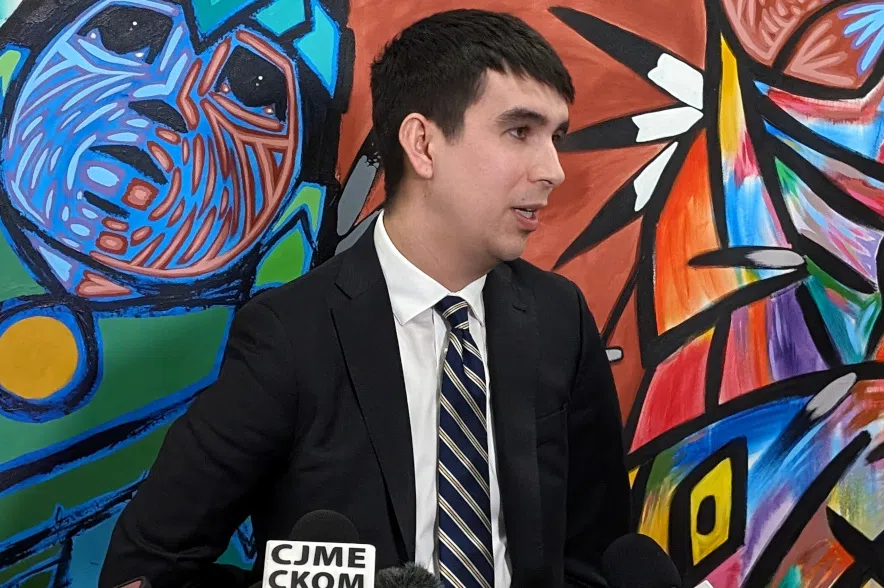“It’s been a lot,” Keith Brown said, shortly after the last witness testimony was heard at the inquest into the 2022 stabbings on the James Smith Cree Nation.
Brown, a lawyer with Gowling WLG, is serving as co-counsel for the First Nation at the inquest.
The inquest in Melfort heard from 31 witnesses over 11 days. Brown said there was a lot of evidence presented, but in some cases the testimony was only able to touch on important issues.
“We’ve heard about a lot of systemic issues related to intergenerational effects of residential school, systemic issues regarding underfunding of all sorts of things, interface of corrections and the parole board and Indigenous communities, and just so many issues that each could be their own weeks-long process,” explained Brown.
READ MORE:
- Day 1: Jury selection, first witness at James Smith Cree Nation inquest
- Day 2: Emotions intensify as testimony continues at JSCN inquest
- Day 3: RCMP witness at JSCN inquest discusses drug trade, warrants
- Day 4: RCMP witness apologizes to veteran’s family at JSCN inquest
- Day 5: Psychologist shares assessment of Myles Sanderson at JSCN inquest
- Day 6: Inquest hears Sanderson wasn’t among Sask.’s most wanted before attacks
- Day 7: Sanderson’s release from custody scrutinized at JSCN inquiry
- Day 8: Parole officers, program facilitator detail Sanderson’s progress in prison
- Day 9: Psychologist offers apologies to families during JSCN inquest
- Day 10: Pathologist tells inquest EMS likely couldn’t have saved murder victims
- Day 11: Elders describe dealings with Sanderson in prison
He said the narrow, specific scope of the coroner’s inquest doesn’t offer an opportunity to fully unpack all of the systemic issues at play.
The next step is waiting for the jury to determine the official causes of death for the 11 victims and make recommendations to prevent similar deaths in the future.
Brown said the types of recommendations that will emerge from the inquest will likely come down to how broadly or narrowly the jury interprets its task.
“The narrower you think of it, the narrower the scope of what the jury will be doing,” he said.
“It’s in the jury’s hands to grapple with the mountains of evidence that they’ve heard from various different, very valuable perspectives relative to the mandate that they now have to take away and execute on.”
Brown said the institutional witnesses – including those from RCMP and corrections – tended not to make any suggestions for recommendations.
“In our questioning, we did our best to interrogate that a little bit and, you know, try to get that out in other ways even if they don’t want to put the label ‘recommendation’ on it,” said Brown.
Despite the limited scope of the process, Brown said there was a lot of thought and work put into it.
“I’m hopeful that individual families perhaps got a little bit more information and, maybe, closure as to the specific circumstances of their own loved ones,” said Brown.
“We did our best to raise some of these systemic or continuous themes to the surface in our questioning of the various witnesses.”
There was talk from the First Nation’s leaders about wanting a national inquiry to delve deeper into these issues, which could take a more broad approach. Brown said they’ll want to see the recommendations that come out of this inquiry first.
Brown said it’s critical that the post-inquest process sees the federal government implementing any recommendations that apply to it, and looking deeper into some of the systemic issues that may not have been fully explored during the inquiry.
Brown declined to comment on the witness list for the inquest or how it was put together. Saskatchewan’s Ministry of Justice has said the witnesses were agreed on by both the coroner’s service and the First Nation.
When the recommendations come out, Brown said the James Smith leadership will be looking for things like alerting First Nations when a band member is released from custody and a push forward on First Nations policing.











